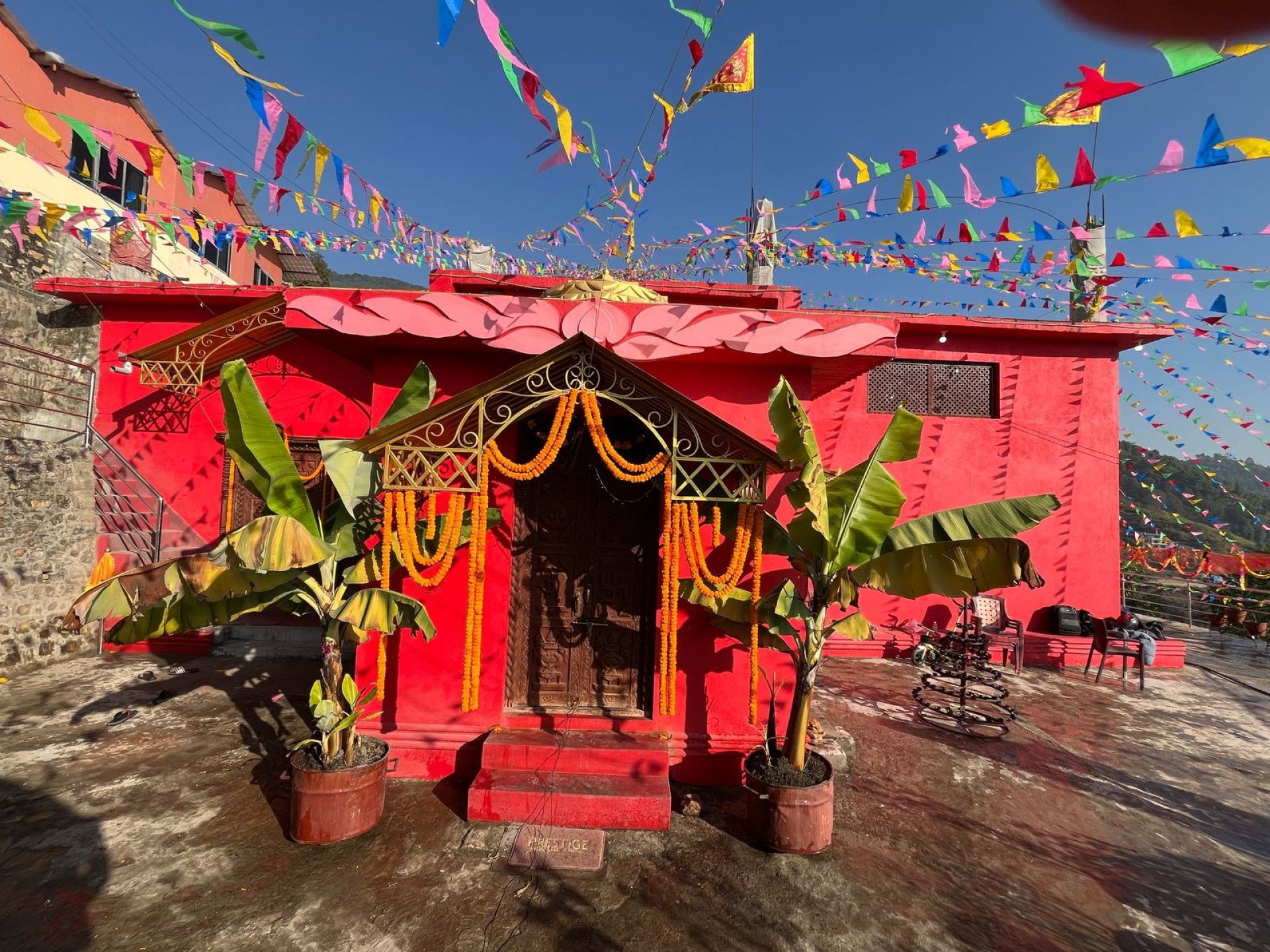-
Places to go
-
Things to do
-
Adventure
Nature
Culture
Wellness
Others
-
-
Festivals & Events
-
Festivals
Event Calendar
-
-
Plan Your Trip
-
Trip Ideas
Travel Details
Book Your Trip
-
- Travel Updates
Dashamahavidhya Siddhapeeth
Introduction:
Guhyakali Peeth is one of the world's 51 major holy sites of the goddess of power, popularly known as Shakti Peeth. It is also revered as the mahapeeth of the peeths (greatest among the sites). Shivapuri Kshetra, situated in the north of the Kathmandu Valley and one of the significant sites of Guhyakali peeth, is where goddess Mahalaxmi has been enshrined for ages. It is a historically as well as mythically (pauranic) important site, a tapobhoomi (a holy place). It has always remained a centre of meditation and spiritual activities, also a centre of devotion and worship for followers of the Siddhanath tradition. Since Shakti sadhana is itself a mystic/secret form of worship and devotion, and it can only be instilled and transferred through guru tradition, every common worshipper finds it hard time obtain the method and knowledge of this special form of worship on his/her own. Shaktipeeth and worshippers keep alive and vibrant this tradition of sadhana (spiritual practice based on discipline and dedication), otherwise this tradition would have already withered away. To keep the tradition of shaktisadhana intact and flowing and to make a centre of meditation and worship, this Dashamahavidhya (Ten Noble Knowledge) Siddhapeeth has been established.
Dashamahavidhya Siddhapeeth:
Shakti Sadhana is an exceptional spiritual practice by which one can have instant results if performed in the right manner. But ordinary minds do not understand the depth of this practice. Though shakti vidhya (power knowledge) is unending, little has been defined and codified by great sages in the form of mantras, which confer immediate blessings. Among many forms of knowledge, there are ten special divinely-powered ones called Dashamahavidhya, which are practised/worshipped in different power deities to achieve bramhashakti (ultimate power), which is quintessential, perennial and ultimate. The deities are: Kali, Ugratara, Tripusundari, Bhuvaneshwori, Chhinnamasta, Bhairavi, Dhumavati, Banglamukhi, Matangi and Kamala. To convey this omnipotent knowledge to real practitioners/ worshippers, this Siddhapeeth has been established. Both Vedic and tantric followers practice this great knowledge. Human beings can attain all four sources of ultimate power through the blessings of these deities. This knowledge practice is a simple means to attain mokshya (salvation). The devotional practices of supreme consciousness never go in vain, but a lack of the right kind of practice and knowledge can deprive human beings of attaining mokshya. Dashamahavidhya is, thus, essential. This realisation led to the establishment of this Siddhapeeth.
This Dashamahavidhya Siddhapeeth has been constructed at a holy and beautiful site in the Shivapuri area. This peeth has been a centre of worship not only in the local area and in Nepal but also for practitioners from around the world. It is not only the place for tantra sadhana but also for the worshippers/followers of yoga, Vedic knowledge and bhakti sampradaya (devotion cult). Six feet tall metal idols of each of the ten goddesses have been enshrined and placed around Adi Shiva Linga (which is in the middle) under the same roof; it is the first and the only of its kind in the world.

Kaul Tradition and Dashamahavidhya Siddhapeeth:
The word 'kaul' has been derived from the root word 'kul', which means the power of lineage received from worship and practice through generations. Kauls are the lineage of Dashamahavidhya, and authentic practitioners/worshippers of this supreme knowledge. Adinath Shiva is the first guru of the Kaul tradition, and by virtue, Siddhanath tradition is Kaul tradition. After Adinath Shiva came Maharshi Kapil, Maharshi Dattattraya, Guru Machhindranath, and Guru Gorakhnath from the same Kaul lineage. Kauls are well-versed in yoga and mantra. The hermitages of Siddhanaths have always been revered as siddhapeeth through the ages. These peeths are important because holy practices at siddhapeeths bestow the practitioners with blessings.
Nepal Tourism Board is a national tourism organization of Nepal established in 1998 by an Act of Parliament in the form of partnership between the Government of Nepal and private sector tourism industry to develop and market Nepal as an attractive tourist destination. The Board provides platform for vision-drawn leadership for Nepal’s tourism sector by integrating Government commitment with the dynamism of private sector.



